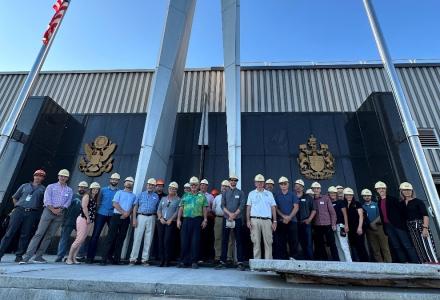
Fishing. Family. Healing. Danger. These and other themes are included in following stories, which are just two from a group of 90 stories first-year students wrote in a course on “Living at the Water’s Edge in Toronto” that I taught at the University of Toronto in fall 2015.
Darren Cheung
When Darren Cheung was 14, he went fishing with his dad on the Otonabee River near Peterborough, Ontario. They saw some huge golden carp sunbathing on one side of a dam; Darren squeezed through a hole in the fence but his dad was too big to make it through, so he remained on the other side, extremely worried as he watched his son tightrope-walking along a thin concrete wall with white waters and fast currents below.
“After about half an hour I was hooked onto a large carp,” Cheung recalls. “I couldn’t believe the rod bent from the power of the fish and the strong currents. From a distance I could see my Father’s worried smile and he was yelling out ’Be careful Darren!’ After almost an hour of battling the fish I finally landed it. I brought it to him and the first thing he did was give me a huge hug and said, ’Never again’ while we both laughed and smiled in relief.”

Dure-ajam Bajwah
Shamaila Bajah’s family regularly spends the day at Woodbine Beach on Lake Ontario in Toronto. Bajah collected this story from her sister, Dure-ajam Bajwah about one visit: “I did not feel well that day because I was on my period,” the sister said. “I really did not want to get wet in the water, but I had heard that if you go in the water during your periods it really helps calm your cramps.
“So I just soaked my feet in the water … I was just sitting and relaxing in the nice water, which was surprisingly helping my cramps, and all of a sudden I see my little brother going too deep into the water. He was only eight years old at the time, and he is developmentally delayed and he cannot swim either.
“So I started yelling at him to not go so deep. I was yelling at the top of my lungs for him to come back to shore, but he wouldn’t listen. Then he finally got to the part where there was a deep plunge in the water and a huge wave rolled him farther down and he started to drown. I could not think of anything at that moment and I ran after him in the water, fully clothed! I grabbed him and dragged him to shore and I made him cough because he had gotten a lot of water up his nose and in his throat.
“That was the most terrifying moment for me, because I honestly thought he was going to drown. I had already lost a brother when I was younger and I couldn’t bear to lose another one, so I completely forgot about my periods and being fully clothed and ran after him. After that incident I’m always careful when taking little kids in the water, because a split second can be life changing. The water can be unpredictable and you always have to be cautious when submerged in it.”

Living at the Water’s Edge
These stories were collected as part of a pilot project with Lake Ontario Waterkeepers (LOW) Watermark project, which collects stories about a particular experience people had with a body of water. The stories are stored and shared in a digital archive, creating a permanent, searchable record of the relationship between Canadians and their waters. (The IJC also is collecting stories with LOW on the Great Lakes from Canada and the United States).
Each student wrote their own story, collected five stories from family and friends, and analyzed the stories. They provided feedback to LOW about the process of story collection, so LOW could refine the project. LOW President and co-founder Mark Mattson and LOW Vice-president and co-founder Krystyn Tully visited the classroom to discuss the project with students.
The course was designed so the students, whether newcomers to Toronto or long-time residents, could think about what it meant to live on and with the Great Lakes during their time at the university. The course blurred the boundaries of a classroom, by asking students to get their feet wet on various experiences around the city: visiting an indigenous-led restoration project on the Humber River and a water filtration plant, paddling on the Humber, and hiking the course of a river now buried in the Toronto sewer system. They also invited community members to speak about their work, including an award-winning photographer who has explored the Toronto sewer system and an Anishinaabe (Ojibwe) water-walker. It also asked students to think about a variety of ways to portray the Great Lakes (in film, poetry, science, ethnography, and travelogues)
One of the ways newcomers arriving in Canada claimed the land from indigenous peoples was by describing the landscapes as empty (terra nullius) and unpeopled. But indigenous people in Canada have long and ongoing histories with and stories about the land and water. This course wove those stories with the students’ stories to create a multilayered picture of the relationship people have with water.
The course was singled out for recognition as one of 14 noteworthy pedagogical initiatives engaging the community and taking advantage of Toronto’s location by the University of Toronto’s Centre for Teaching Support and Innovation.
Why do water stories matter for the future of the Great Lakes? Research on the Great Lakes often originates in the sciences, and documents water quality and quantity issues. A focus on water stories might seem “soft” to some. In order to call attention to significant problems, we often focus on the damage done; sometimes we tell people why water should matter to them.
In these stories, people tell us, and themselves, why water matters. The picture they offer is the range of ways that water is entwined with some of the best and most memorable, and sometimes the most difficult, moments of our lives. In these stories, water is not a commodity and not simply a natural resource. The stories are about relationships we have with each other and with the water. The stories also reflect a theory of social change and social action: that change will take place when a broad group of people, not simply those who are water experts, are actively engaged with water issues It may not always be enough to engage people’s heads. We need to engage their hearts, too.
This year, students at the University of Toronto will partner with LOW and the IJC to gather stories from those attending the Great Lakes Public Forum on Oct. 4-6 in Toronto. Some students will also share their stories at this event.
Please look for the LOW booth to share your story, or share your story with the students roaming the event. I hope to do further research on this and other story projects around the Great Lakes, and the theories of social change they reflect and enact. I also hope to build connections with other faculty teaching courses, especially with a social science and humanities component, around, about and on the Great Lakes. Finally, I hope to put together a summer field course jointly taught by scholars in the sciences, social science and humanities that would allow students from the University of Toronto and elsewhere to travel around the Great Lakes to learn with, from and about people working on various issues facing the lakes and their watershed.

Dr. Bonnie McElhinny is an associate professor in the Anthropology and Women and Gender Studies Institute at the University of Toronto. For a copy of the syllabus, you may contact her at bonnie.mcelhinny@utoronto.ca.




